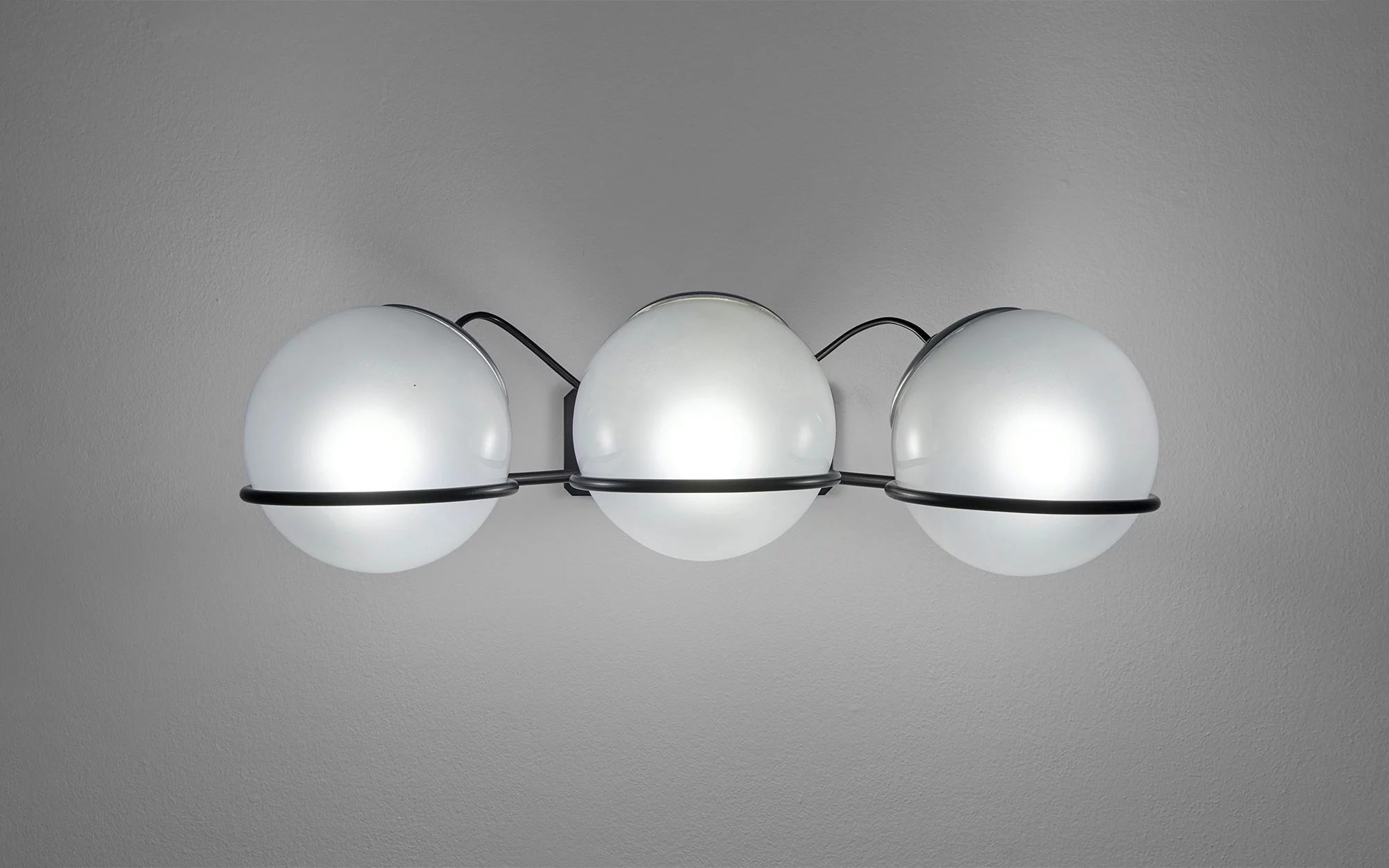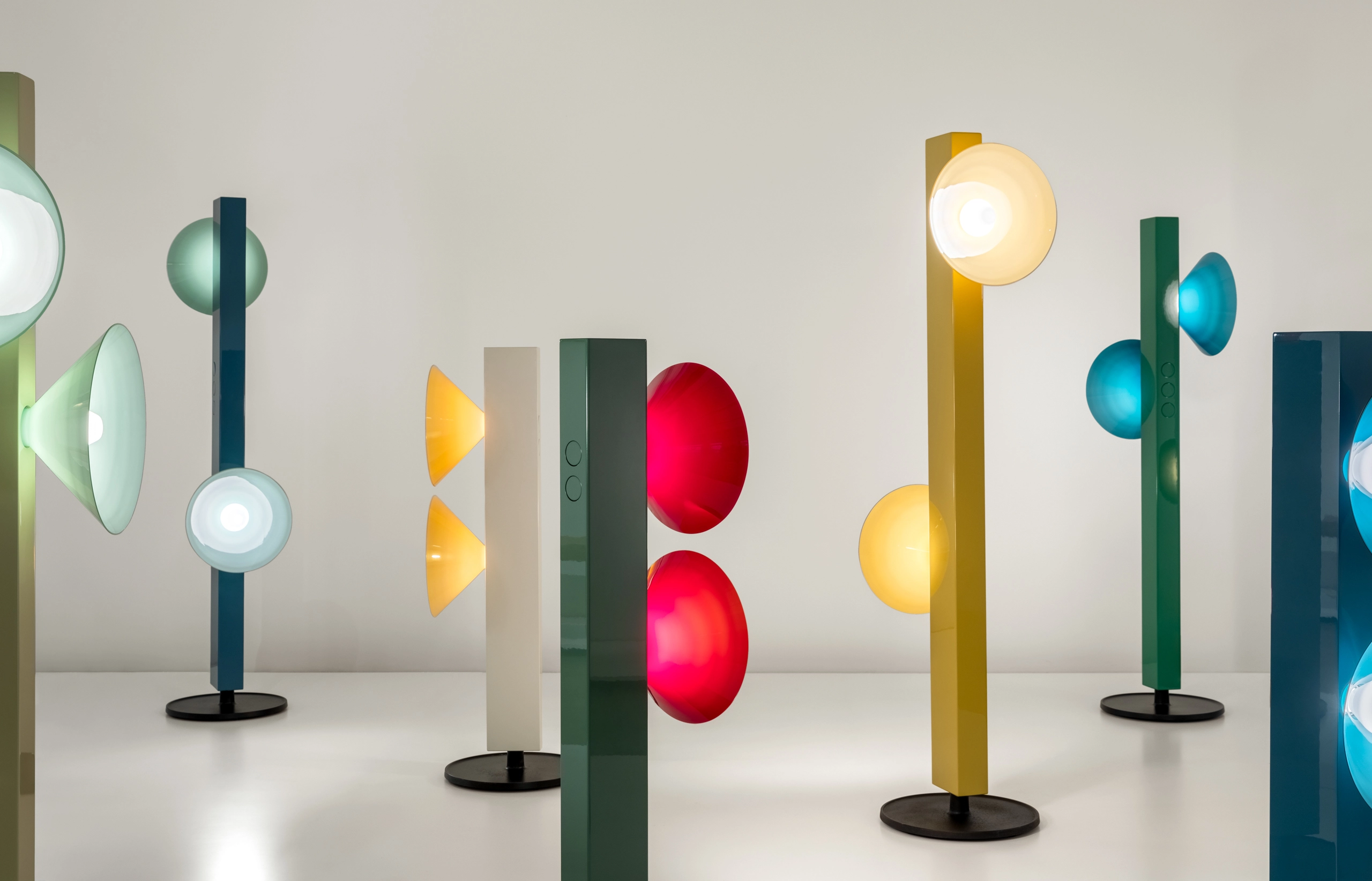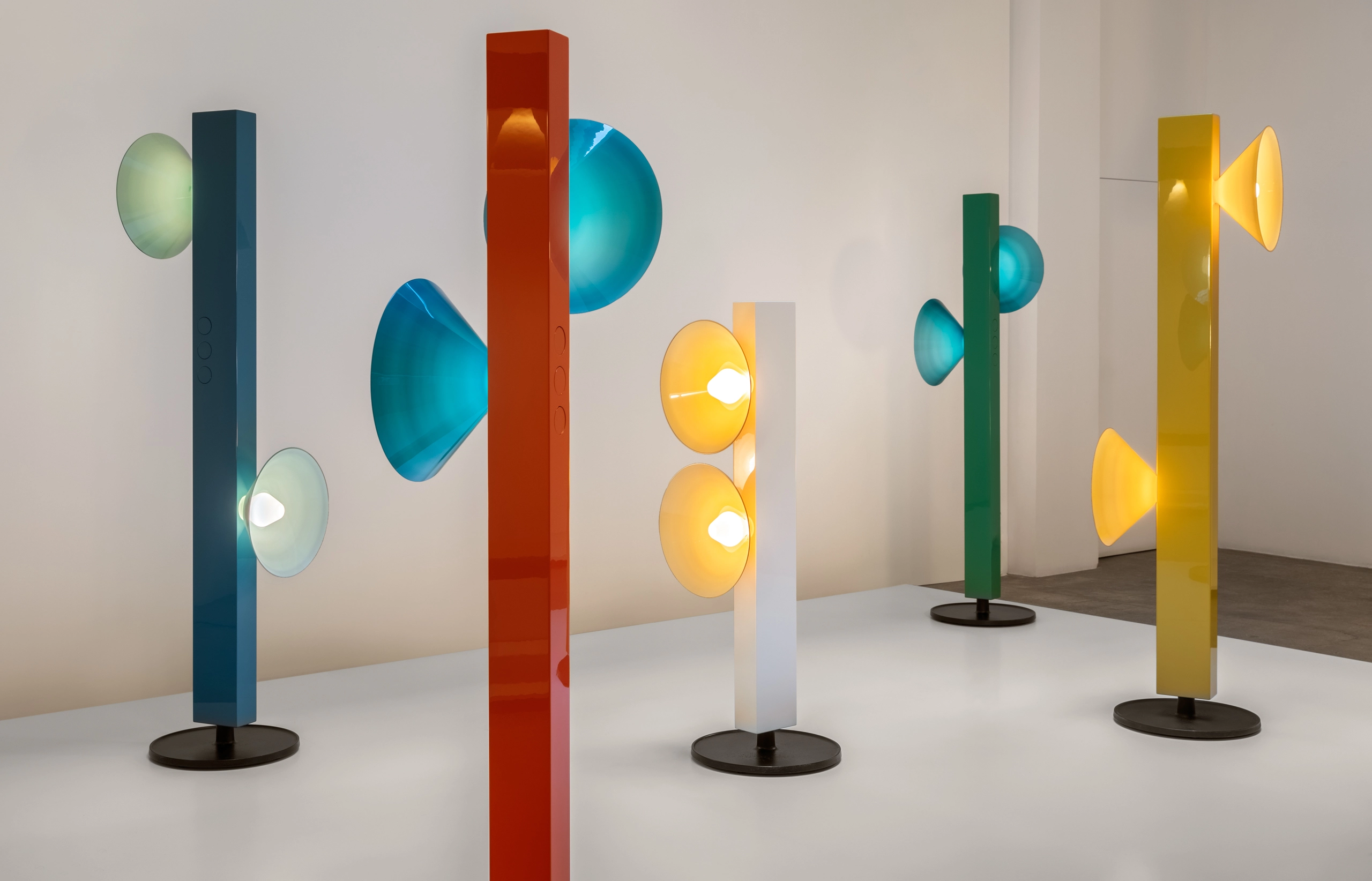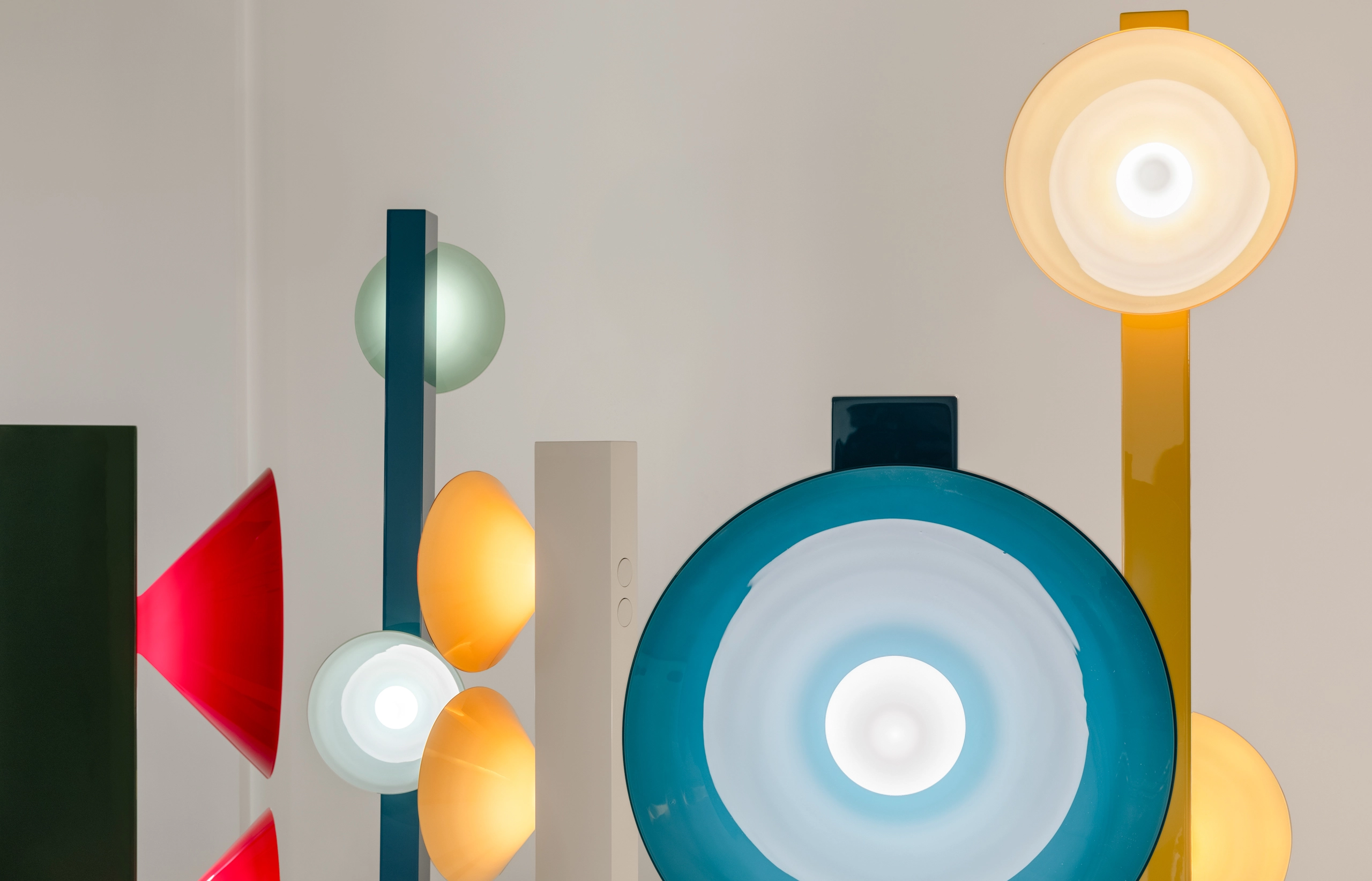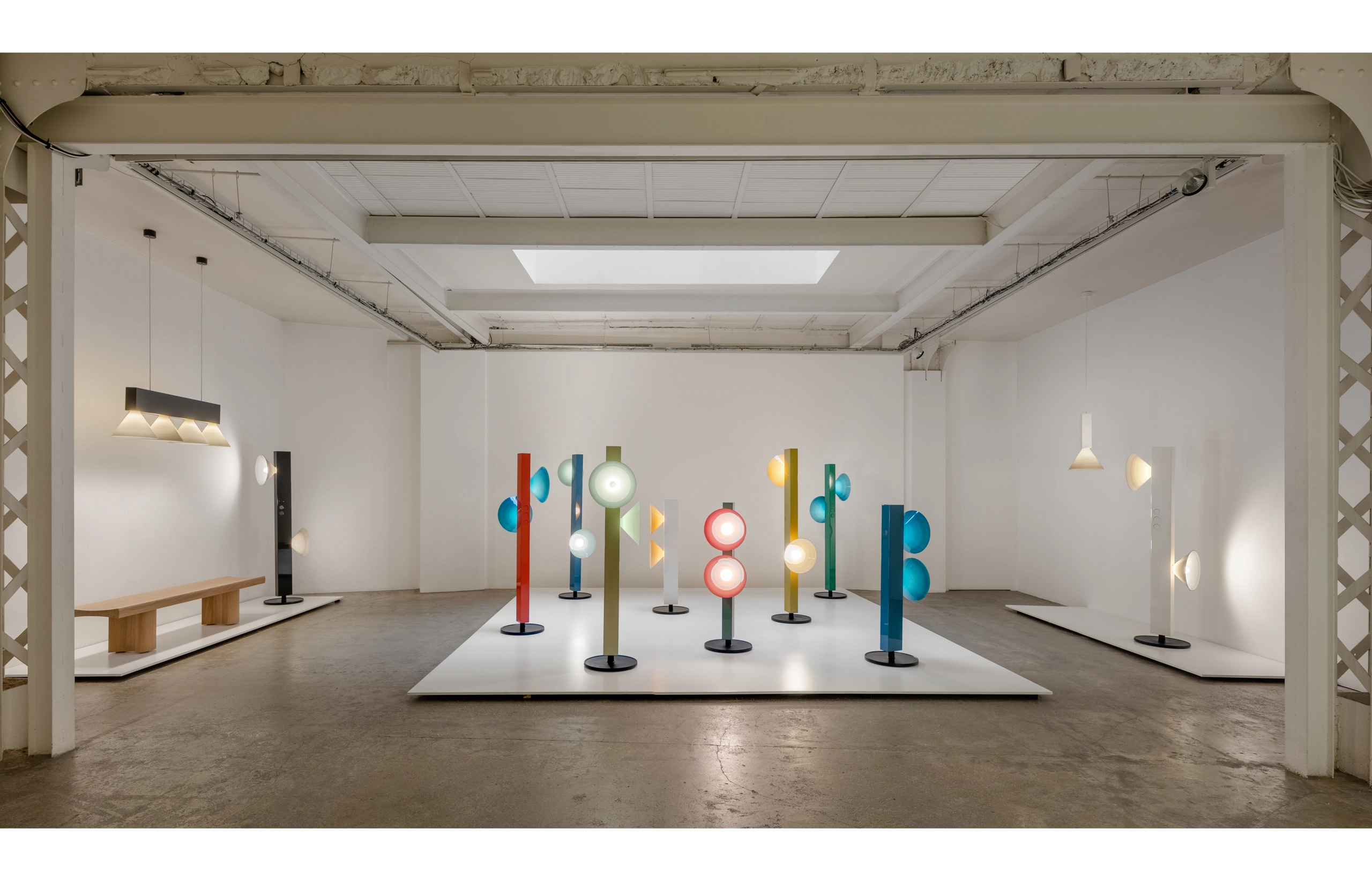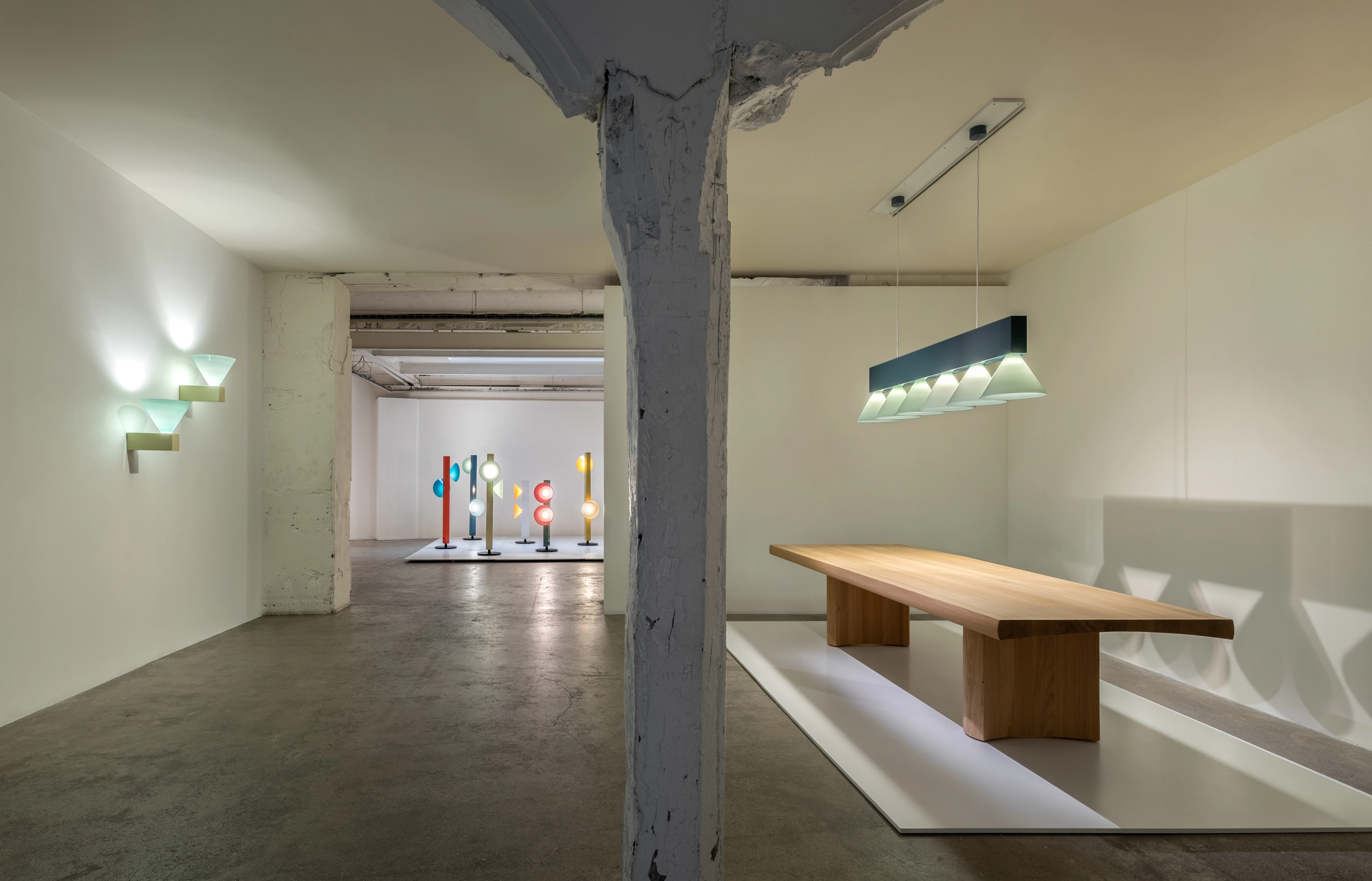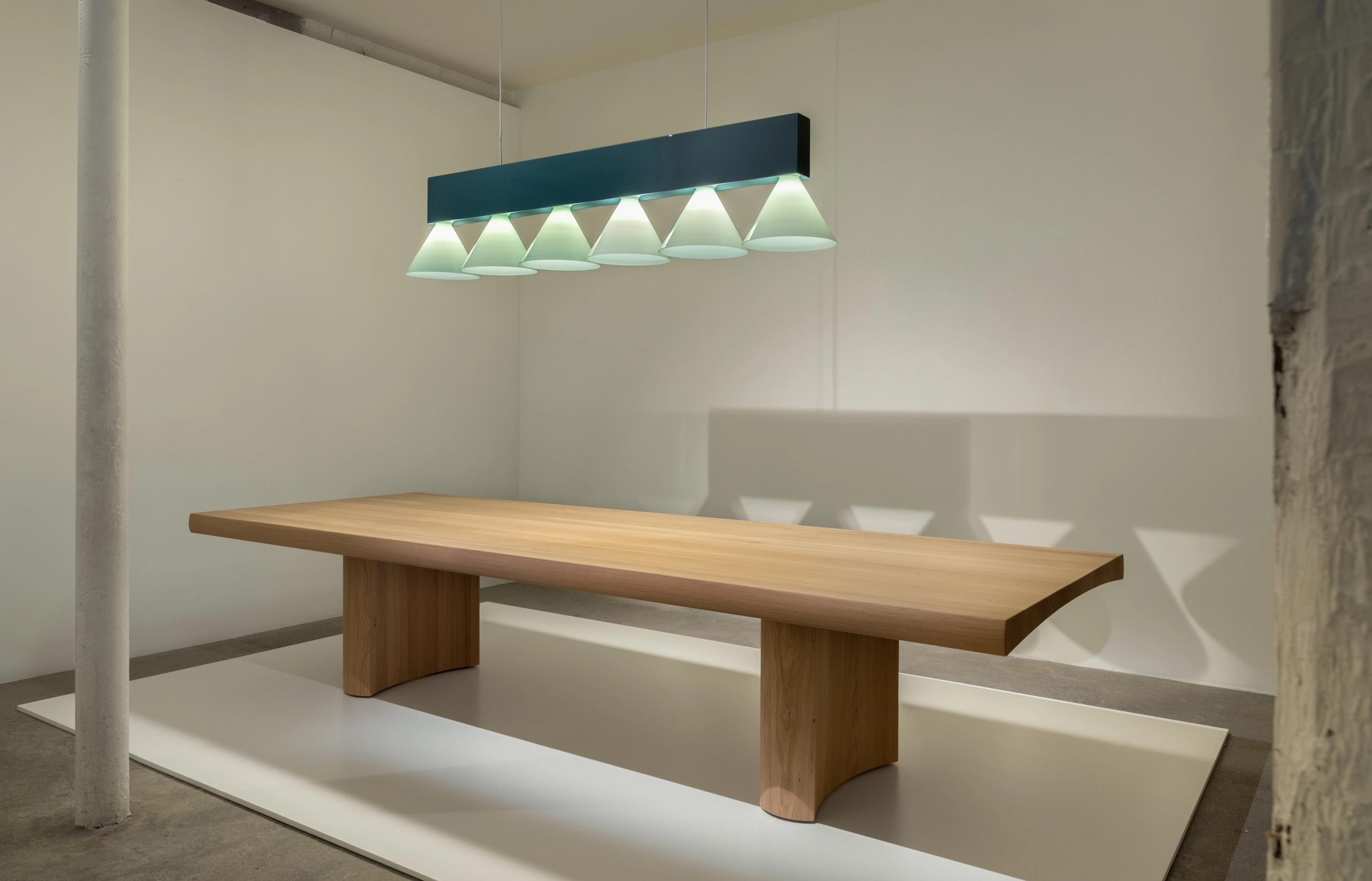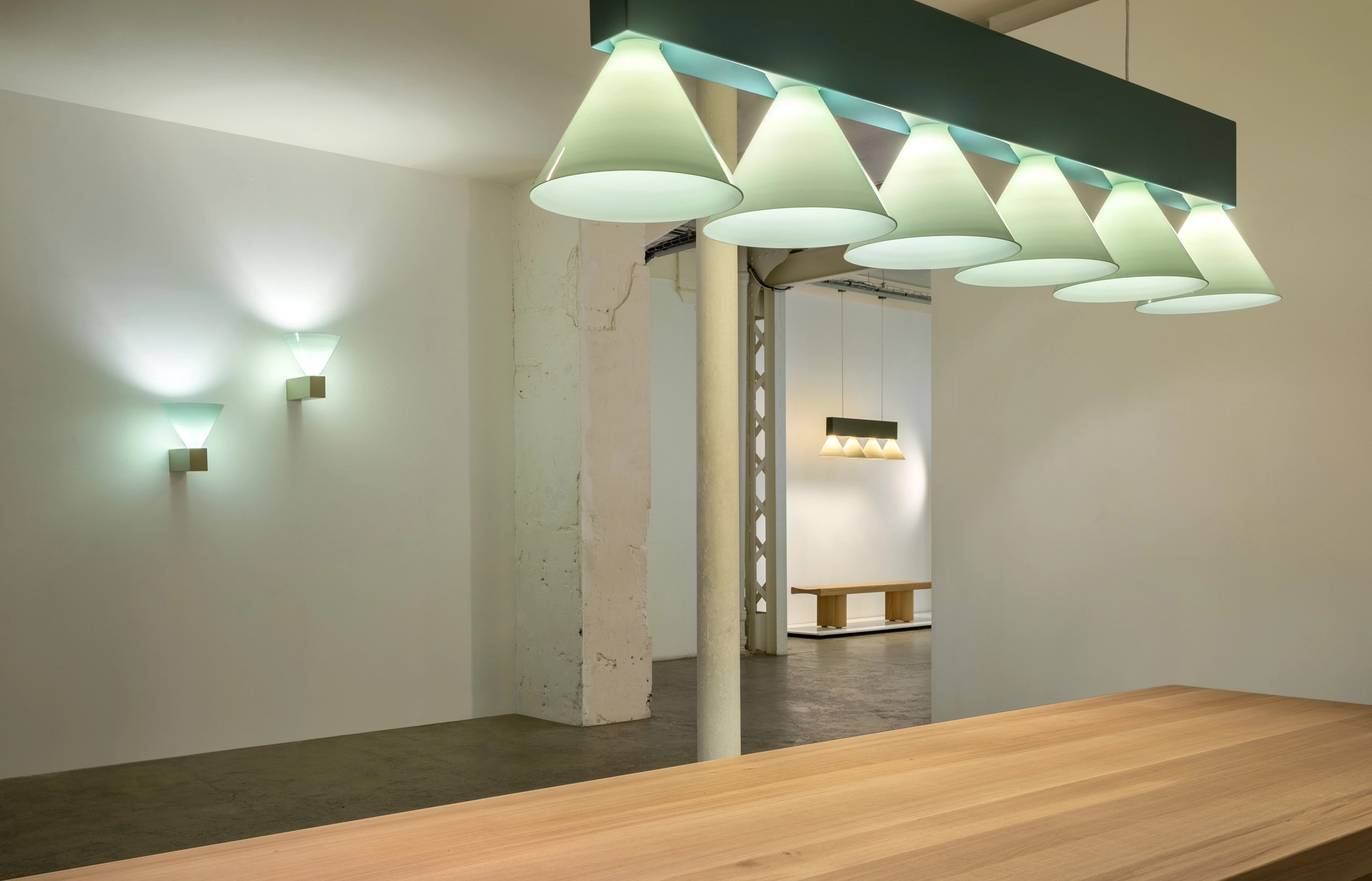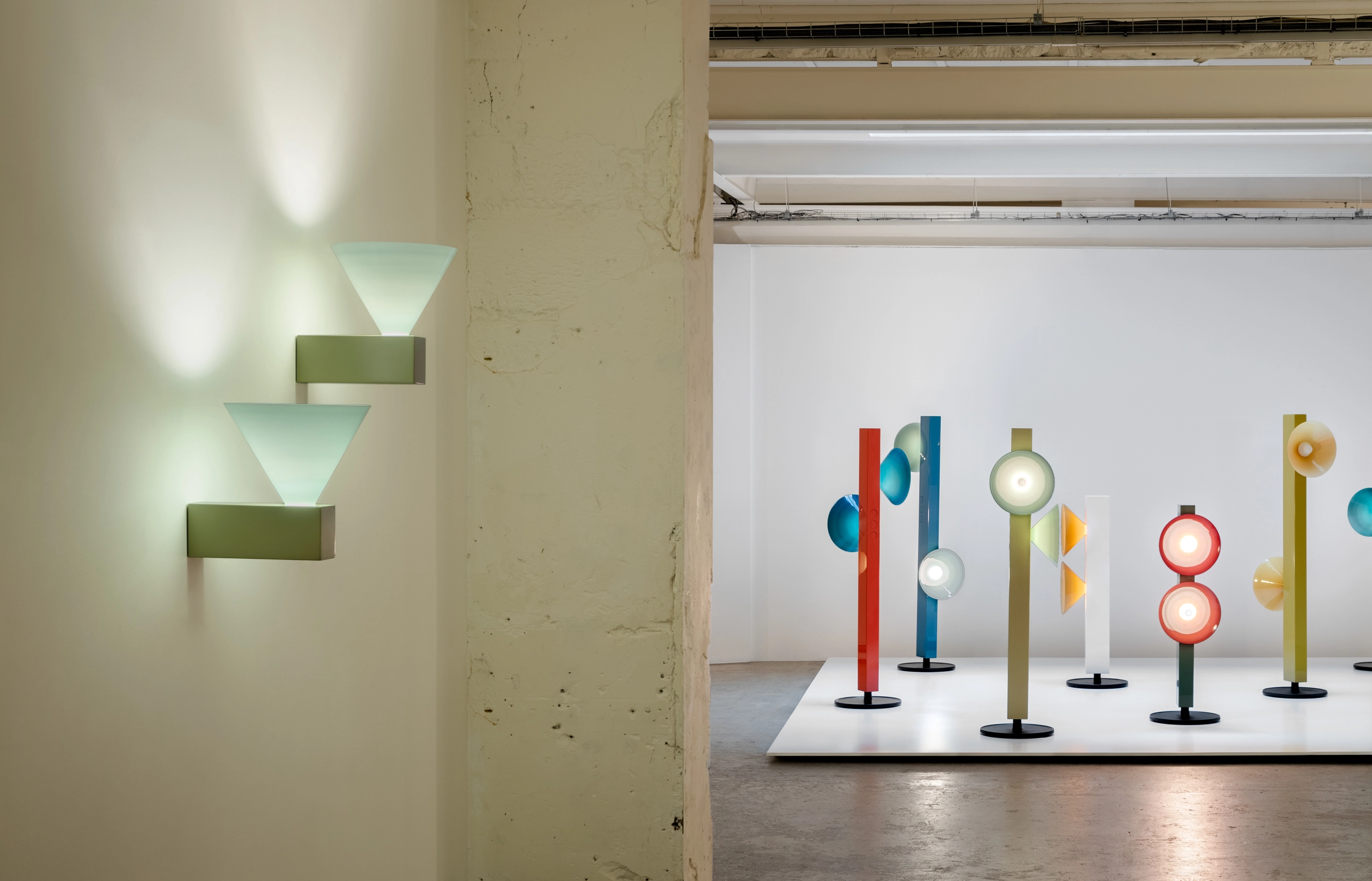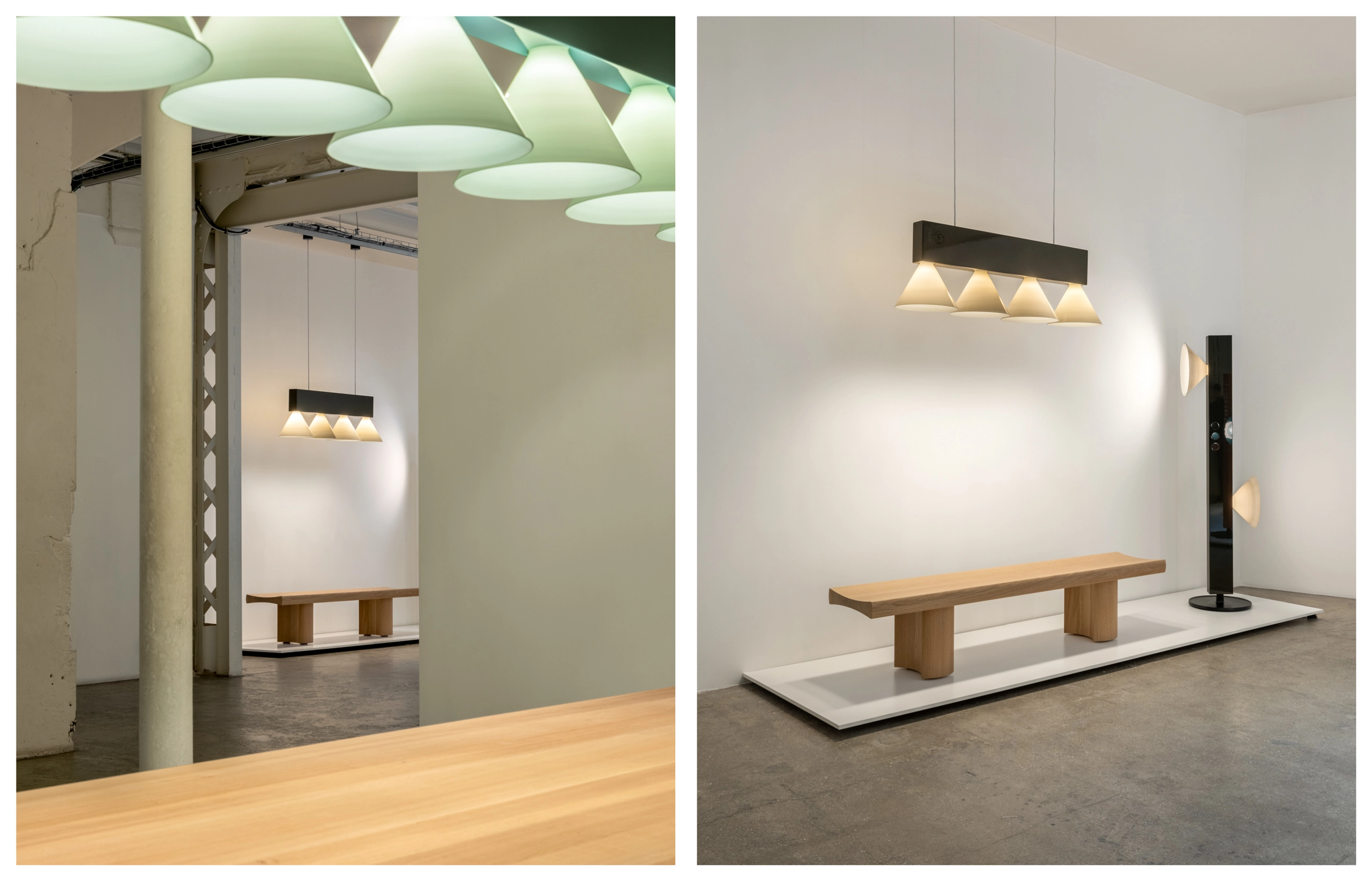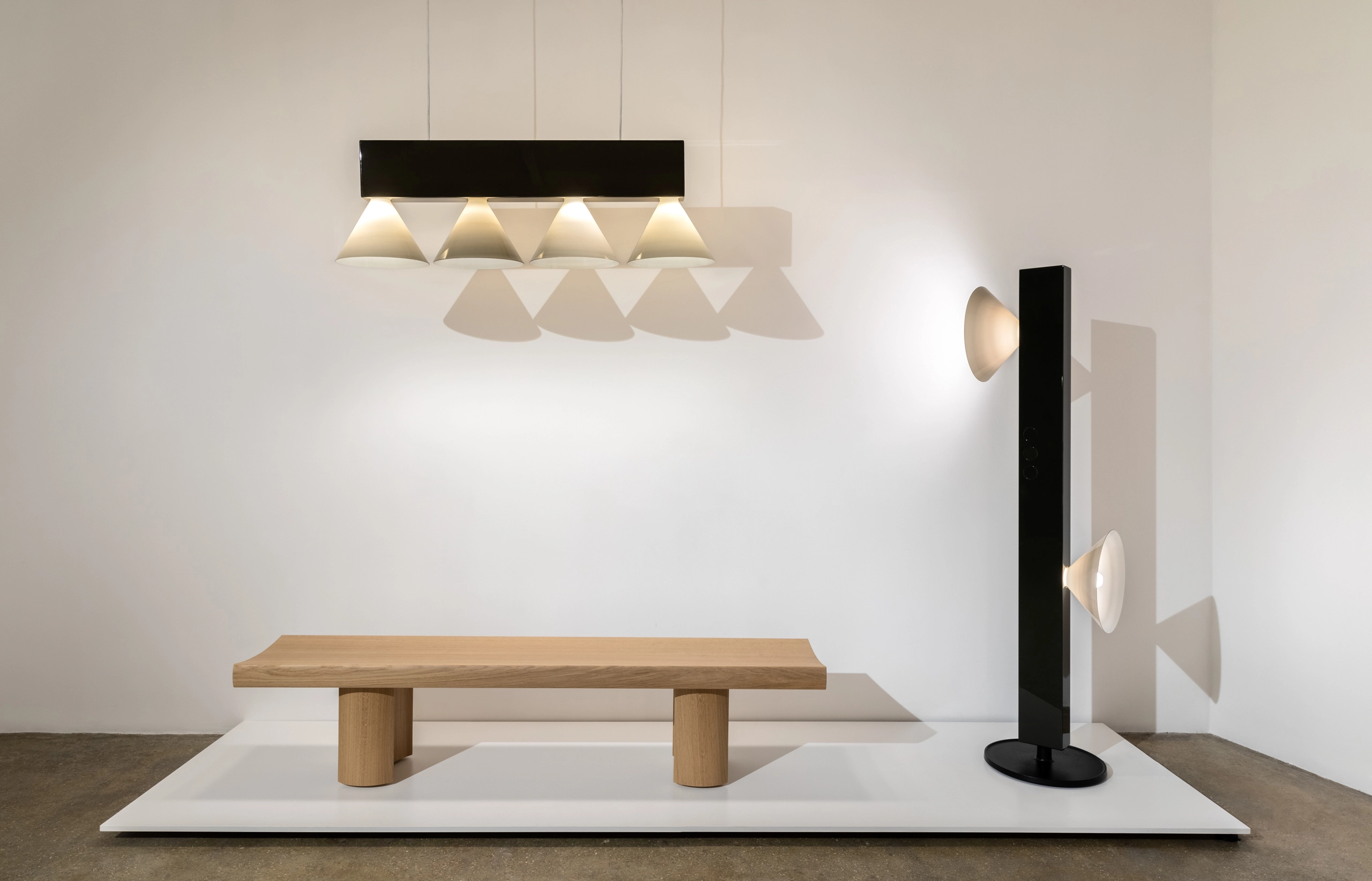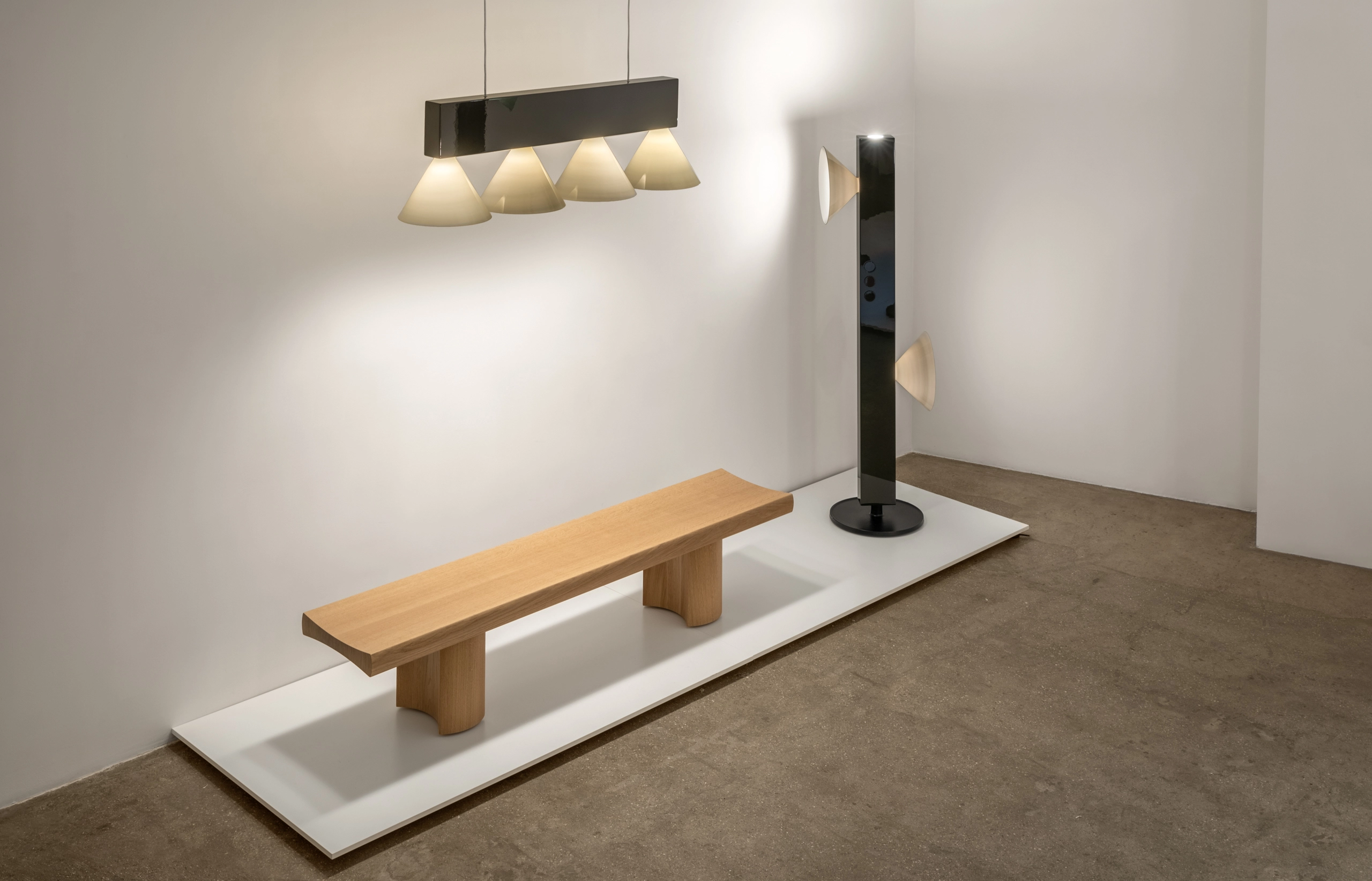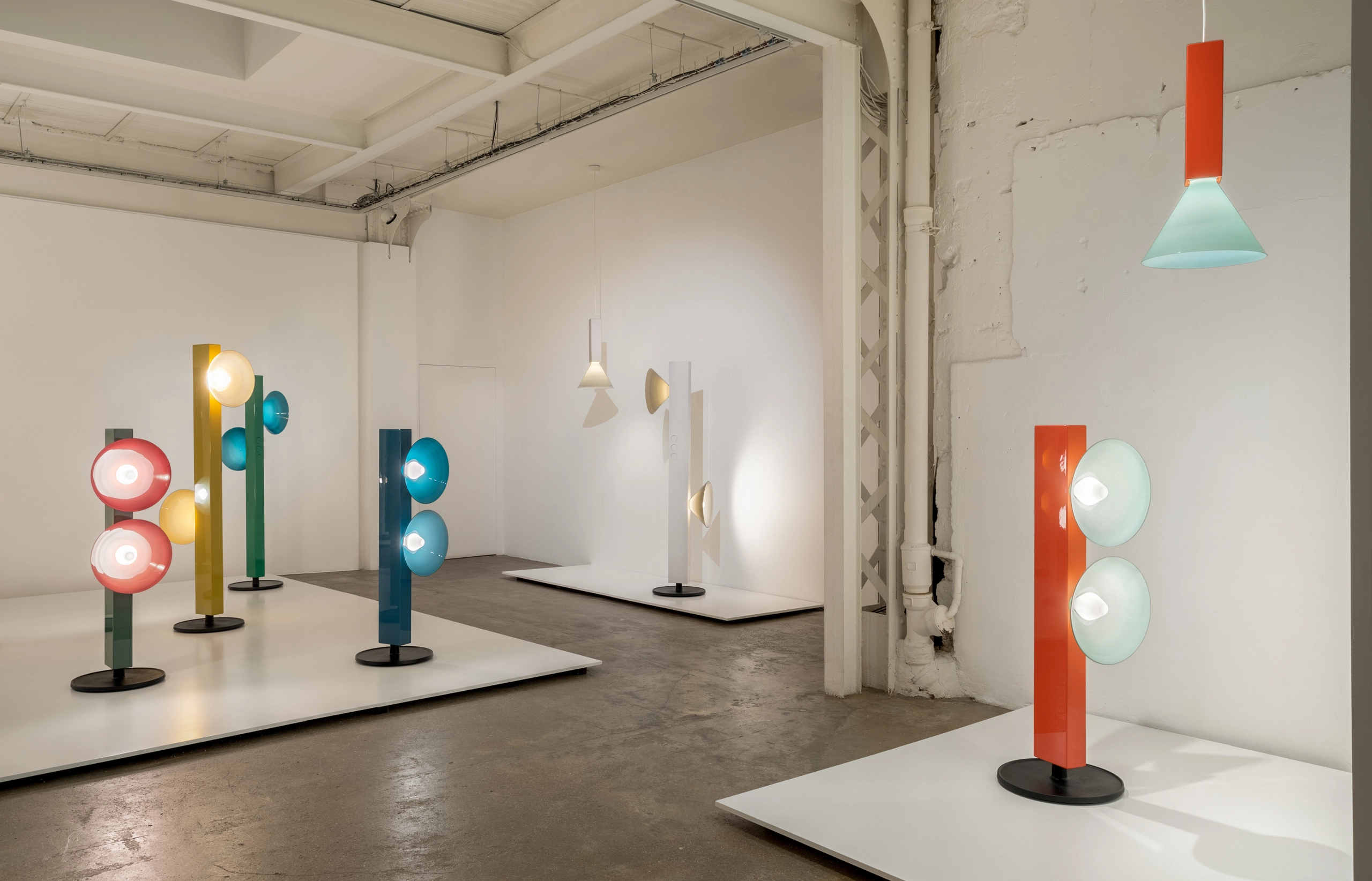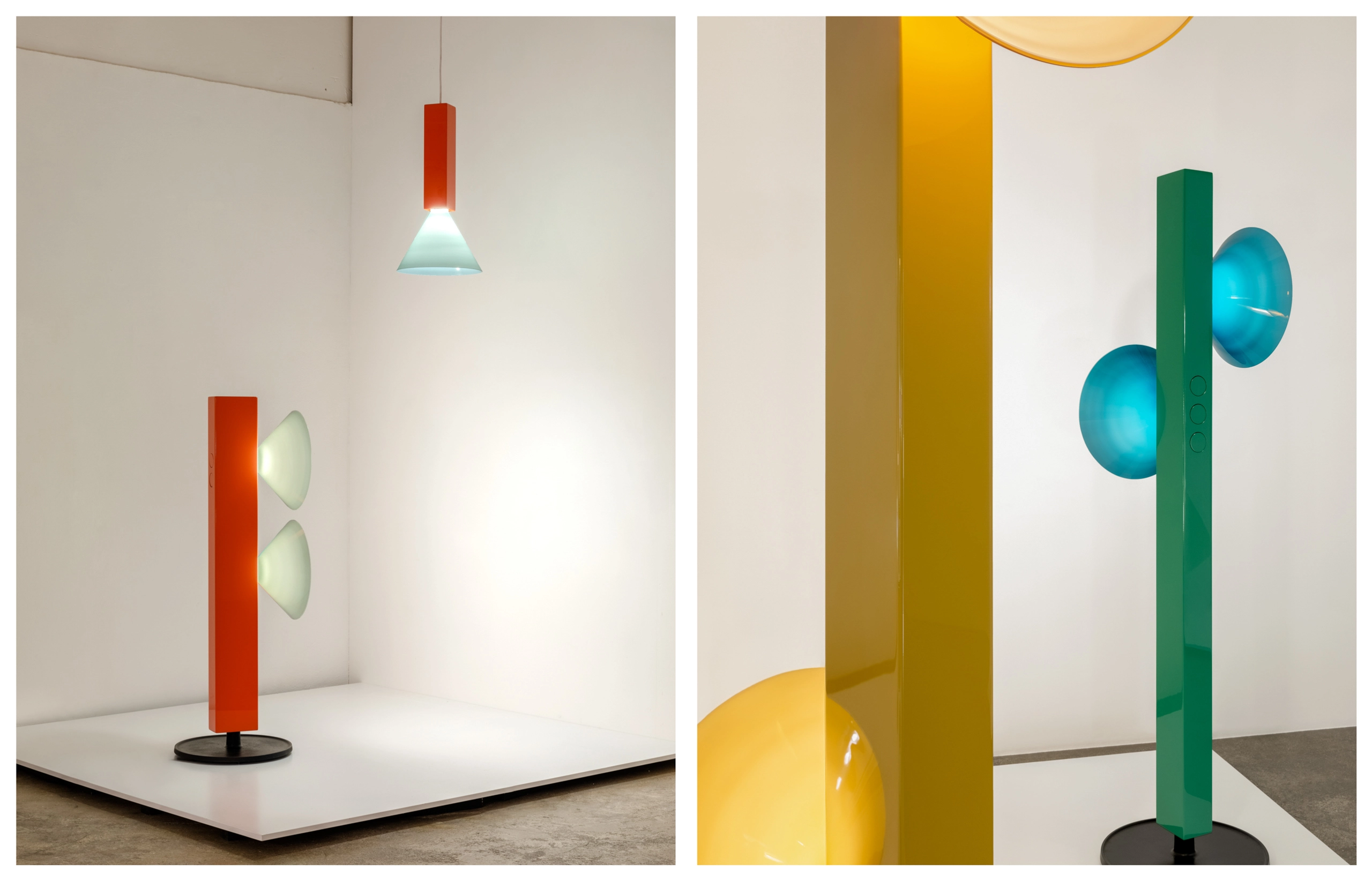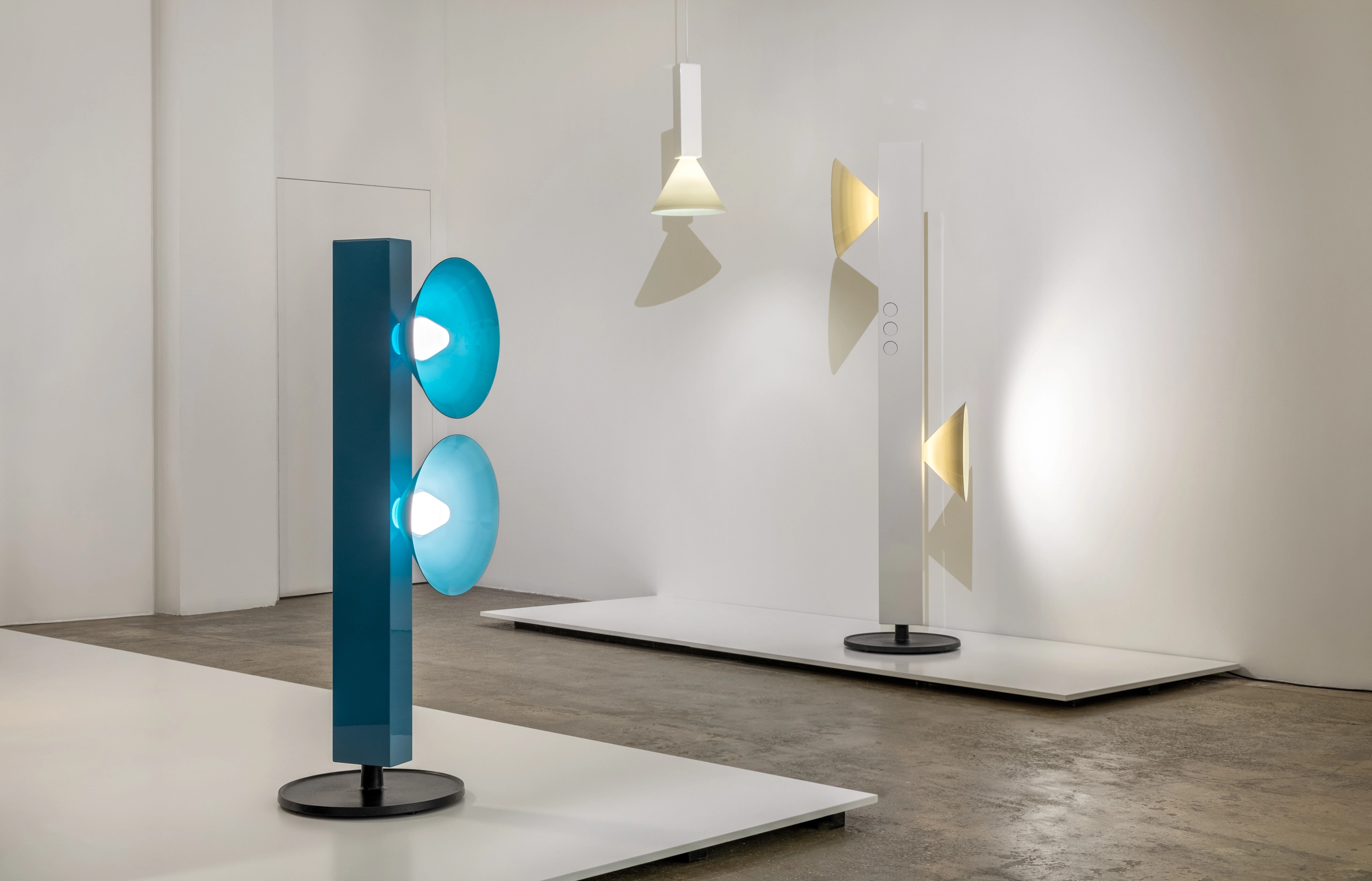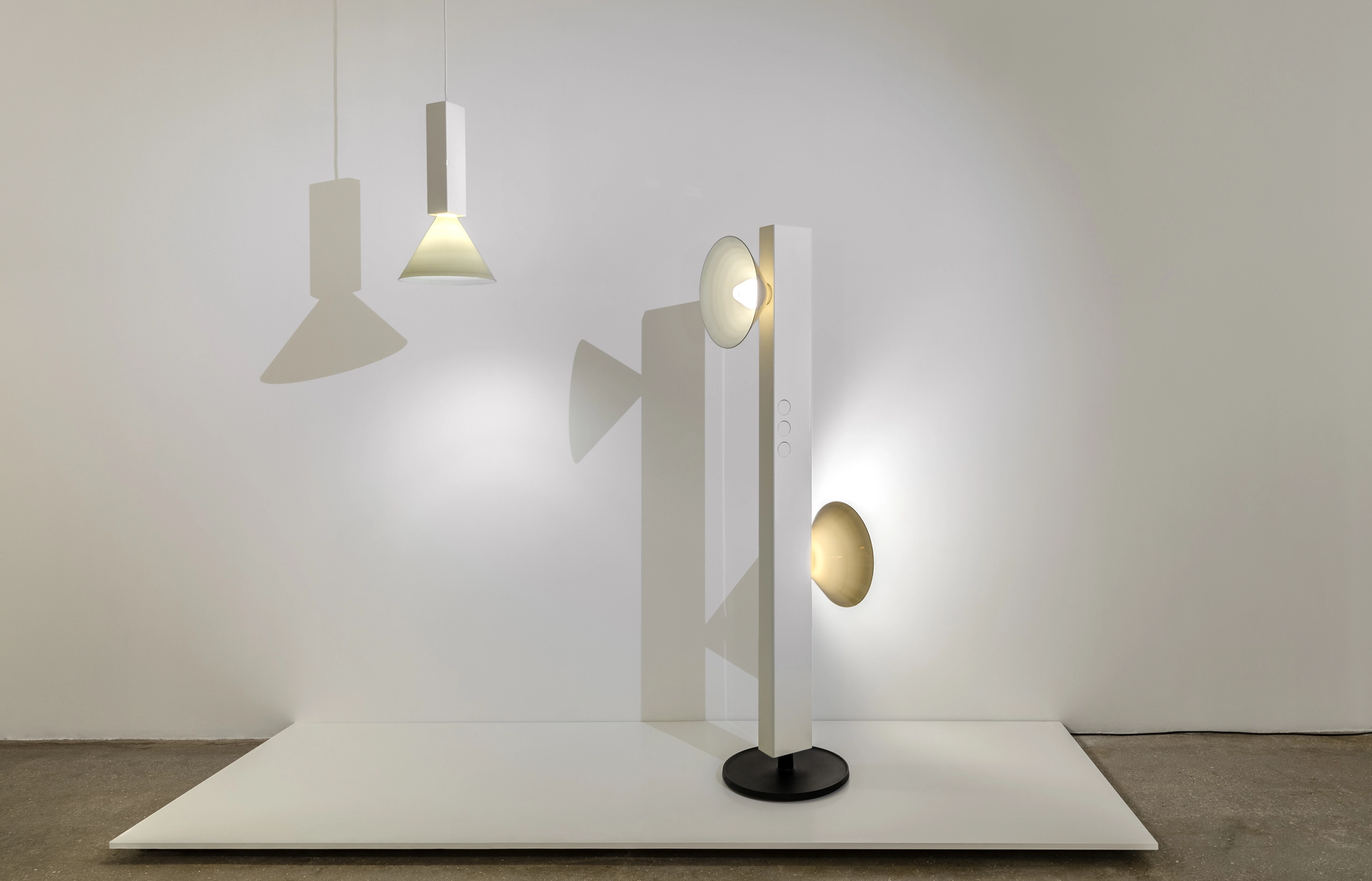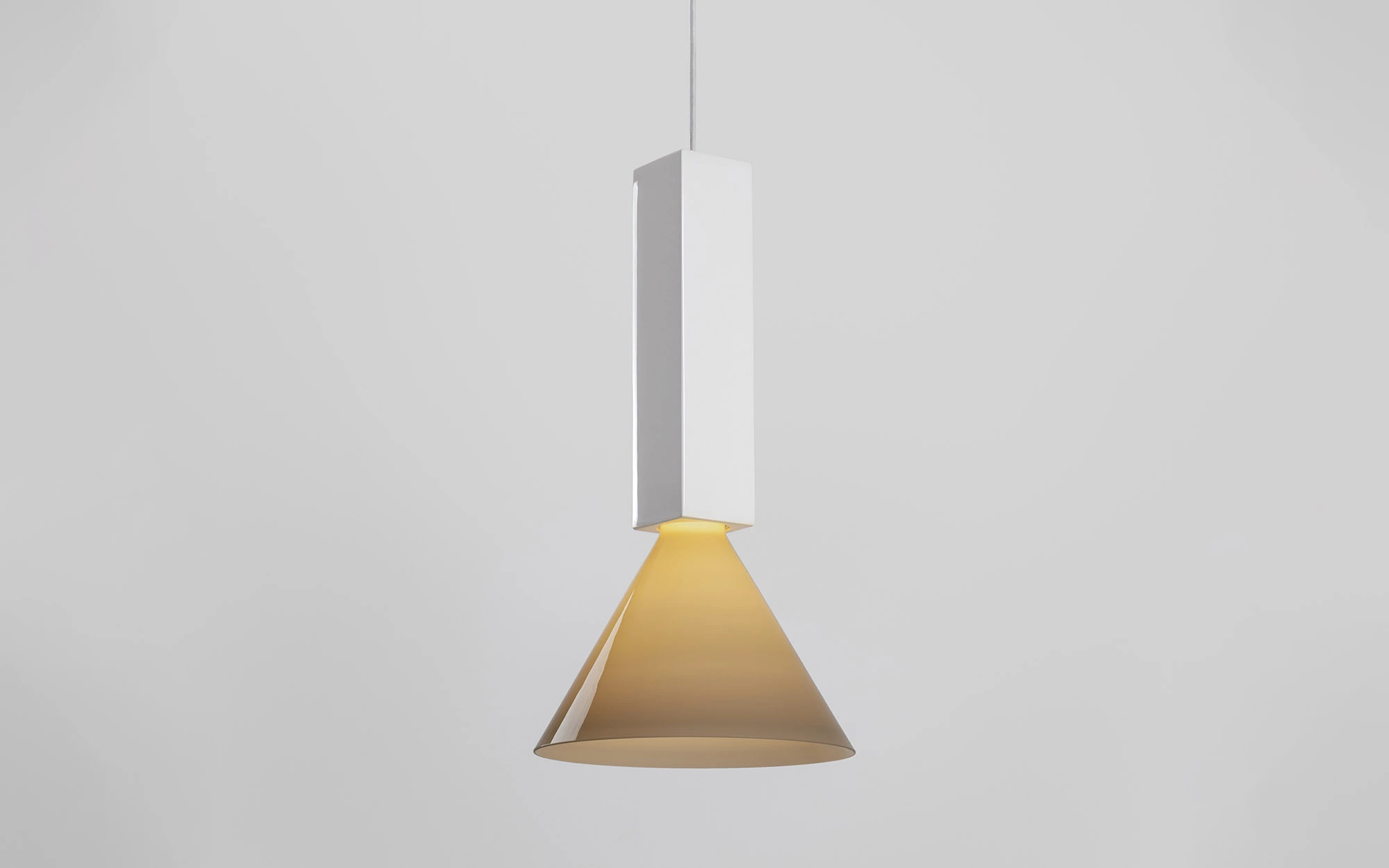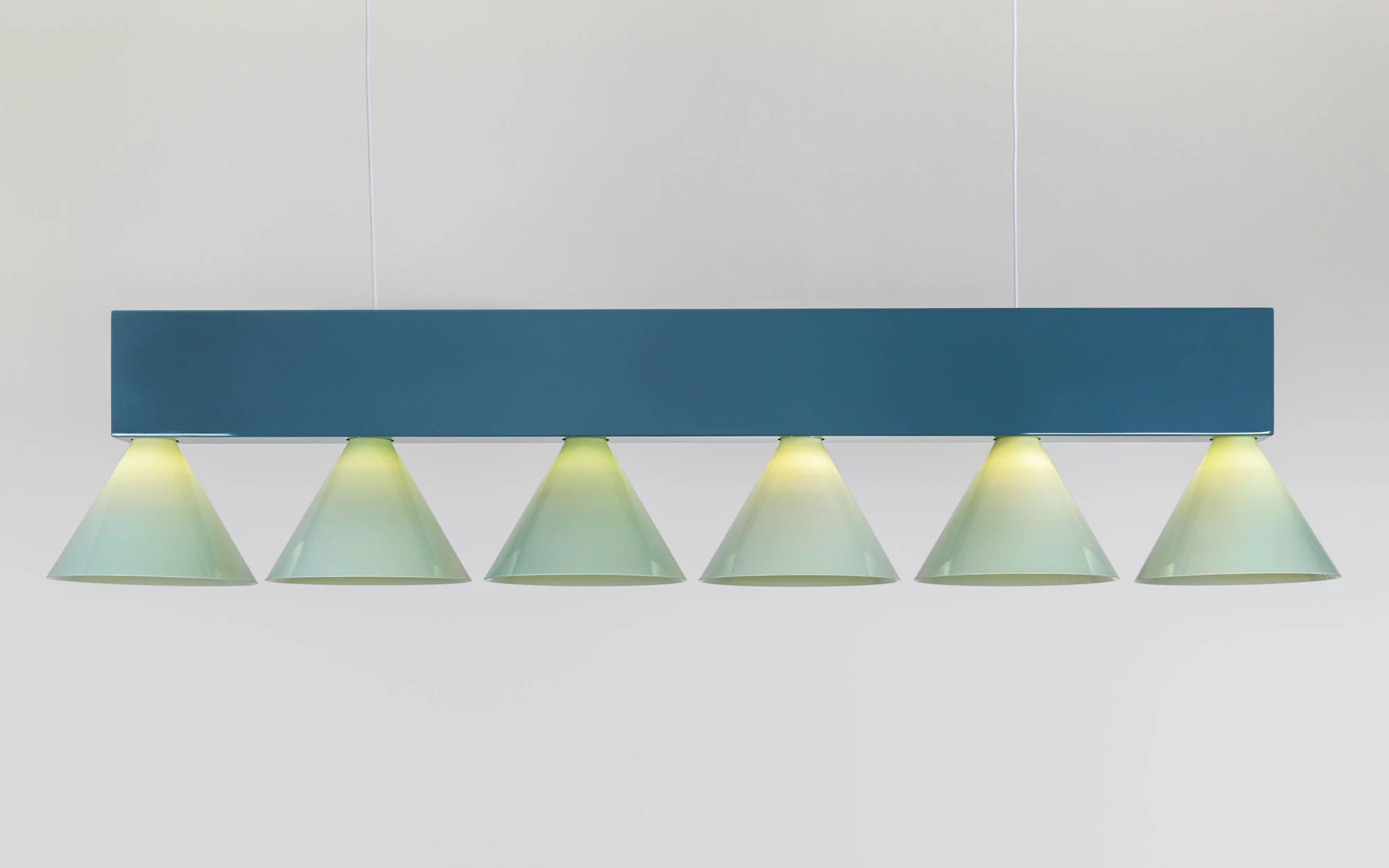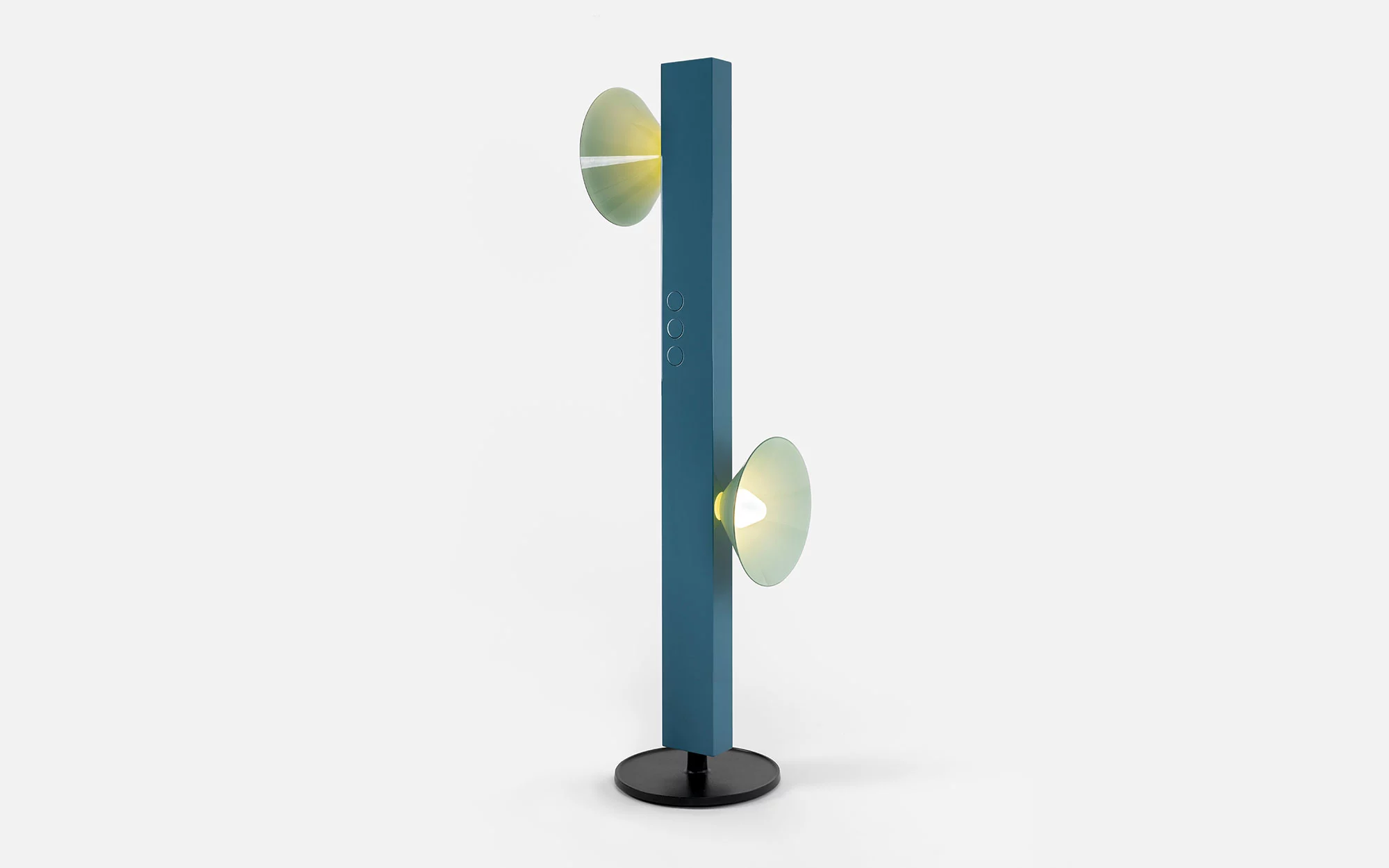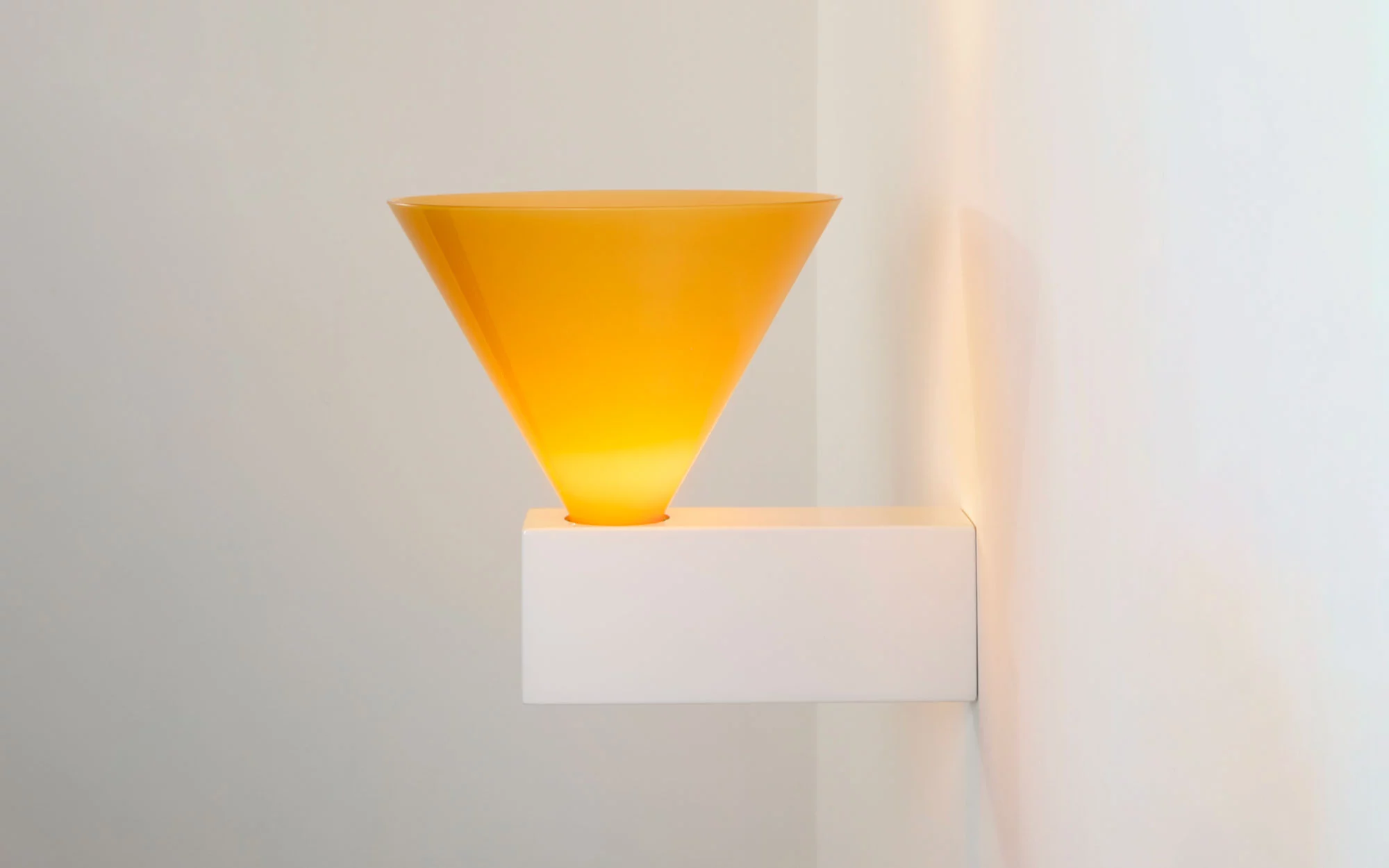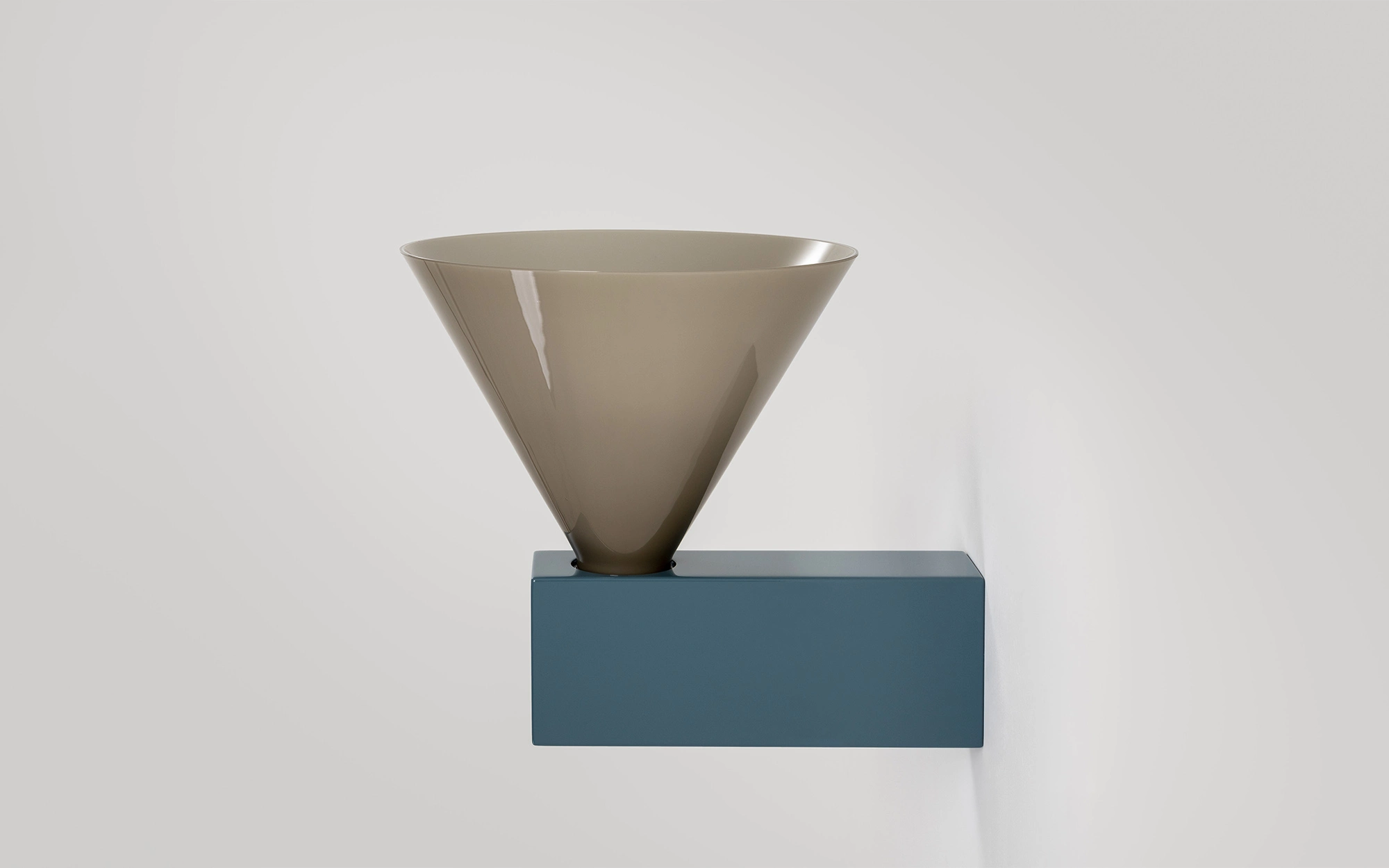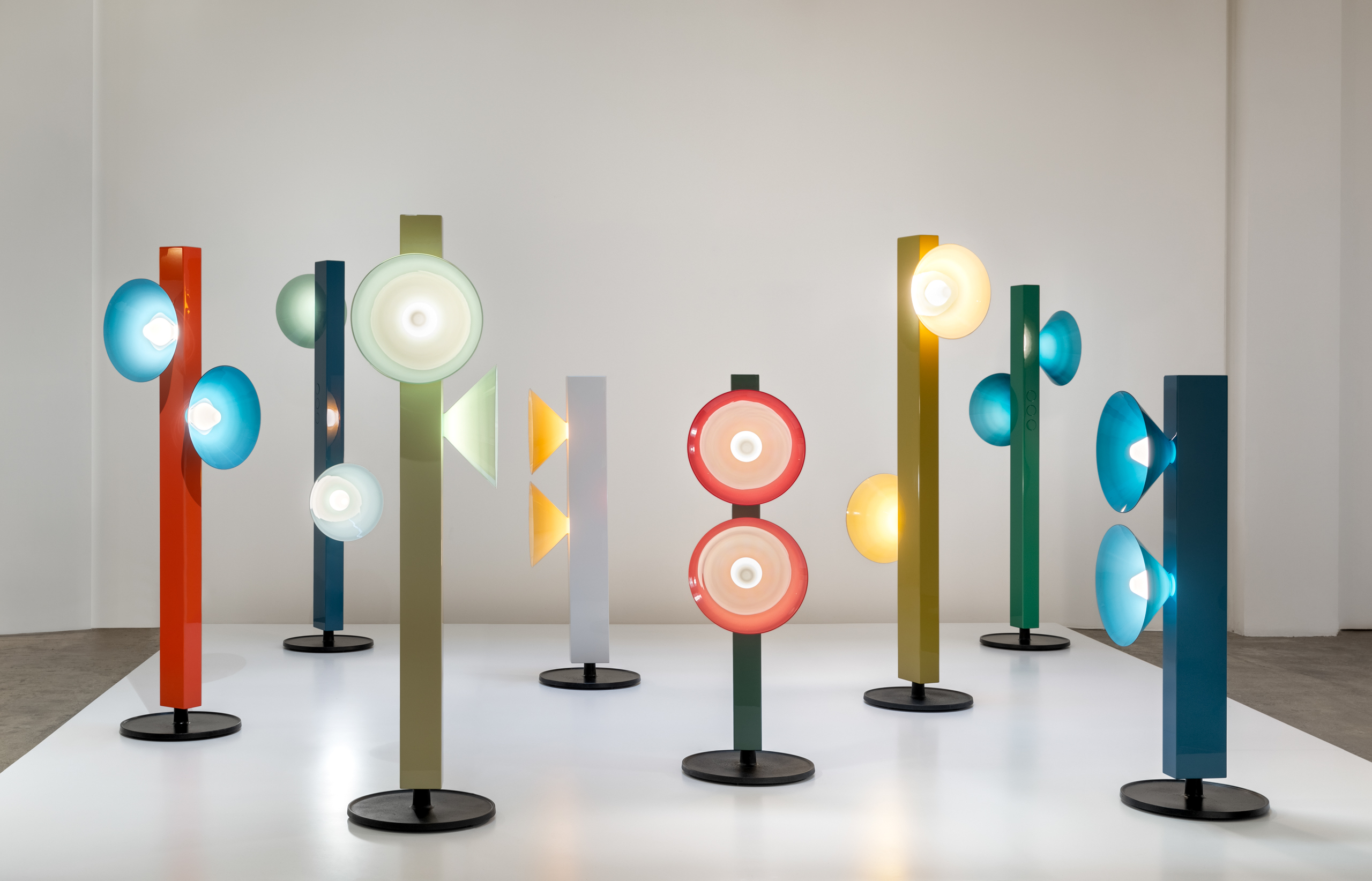
136
'Signals' by Edward Barber and Jay Osgerby
22 April - 14 July, 2022
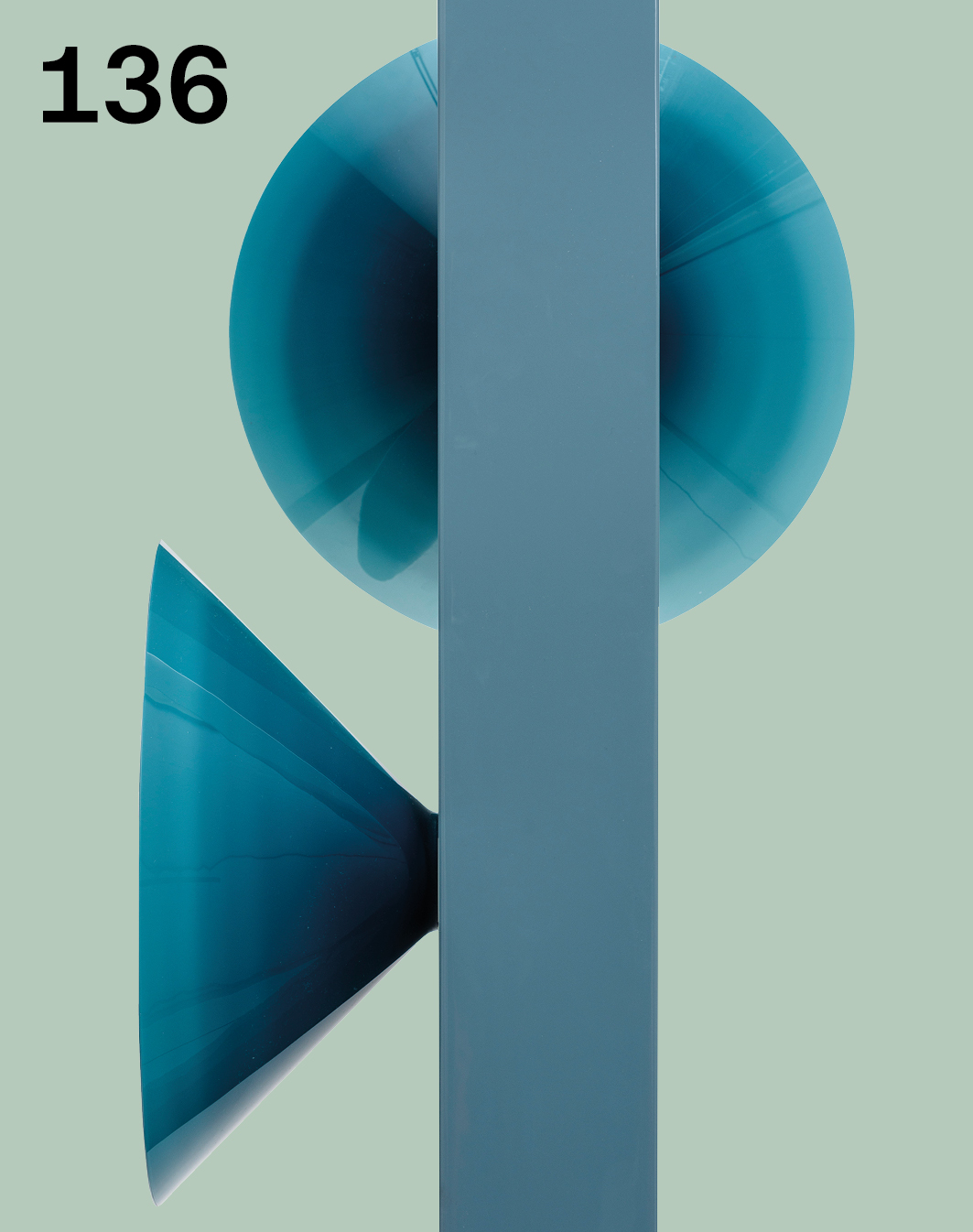
Following the first Opening of Edward Barber and Jay Osgerby’s new collection ‘Signals’ in London, we are delighted to reveal the second instalment of this exhibition in Paris, which will take form in new colour combinations, especially selected by Edward and Jay.
Throughout the careers of Edward Barber and Jay Osgerby, cones have appeared as a motif in their design work. “There is something about the cone that we often return to,” notes Barber. “There’s an energy in its form,” adds Osgerby.
Signals is a new solo show at Galerie kreo, a collection of lights that extends Barber and Osgerby’s interest in the cone form, encompassing a series of floor, wall, and pendant lamps. It marks the studio’s first solo show with Galerie kreo, which began working with Barber and Osgerby in 2016 — a partnership that has, to date, created work including the Hakone family of furniture, whose precise joinery was inspired by Japanese Torii. Signals is the first lighting collection developed by Barber and Osgerby for kreo, with each lamp in the collection created using two principle materials, two pure shapes, and two different forms of making. “There are fragments from many different parts of our past work that have come into creating these objects,” says Osgerby. “Colour compositions, making techniques, and familiar forms. Each light acts as a signal for these ideas,” adds Barber.
Available Works
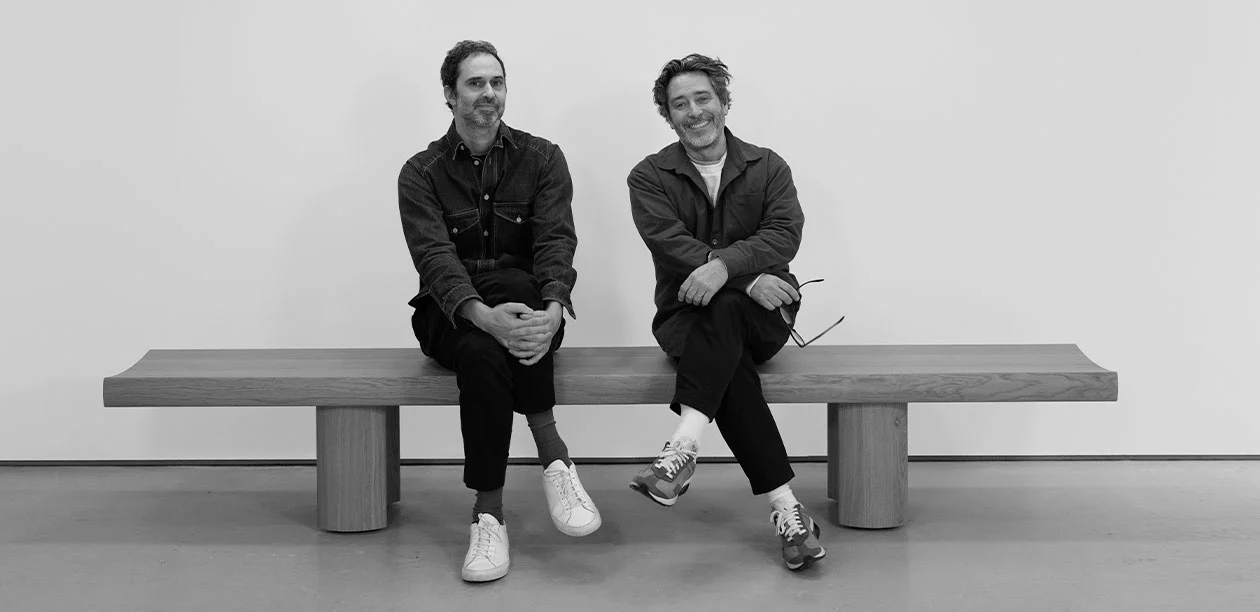

Edward Barber and Jay Osgerby founded their East London studio in 1996, after studying architecture together at the Royal College of Art. For more than two decades their work has challenged the boundaries of design in this country and abroad, while their commitment to lecturing, workshops and studio practice supports the development of new generations of designers.
Barber and Osgerby’s approach is characterised by its emphasis on experimentation and innovation and an exploratory attitude to materiality and colour...


